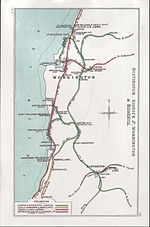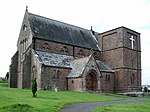Harrington (Church Road Halt) railway station

Harrington railway station, or Church Road halt, was a railway station in Harrington, Cumbria, England. It was opened by the Cleator and Workington Junction Railway (C&WJR) on the company's Harrington Branch which connected with the Lowca Light Railway at Rosehill to provide a through route from Lowca to Workington Central and beyond.Official, authoritative and regional sources variously refer to the halt as Harrington (Church Road Halt), Harrington Church Road, Church Road Halt and simply Church Road. Sources agree when the halt closed, but differ on when it opened. One authoritative source gives the opening as November 1913, whilst a key source with local knowledge gives both 1918 and November 1913 as the date the halt first appeared on the timetable. A later writer says the halt was in use by September 1913.
Excerpt from the Wikipedia article Harrington (Church Road Halt) railway station (License: CC BY-SA 3.0, Authors, Images).Harrington (Church Road Halt) railway station
Church Road,
Geographical coordinates (GPS) Address Nearby Places Show on map
Geographical coordinates (GPS)
| Latitude | Longitude |
|---|---|
| N 54.6154 ° | E -3.5573 ° |
Address
Church Road
Church Road
CA14 5PR , Salterbeck
England, United Kingdom
Open on Google Maps








